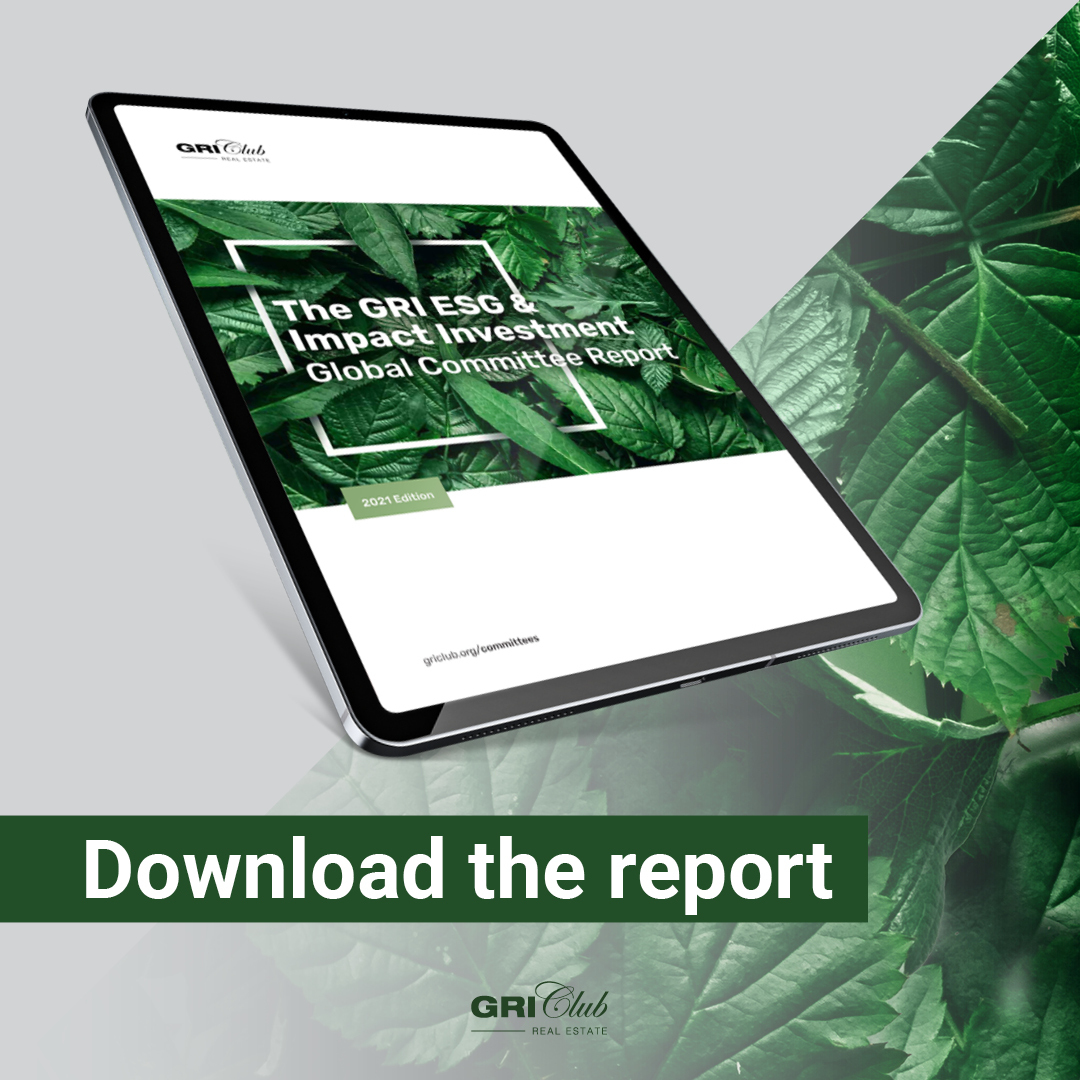
“The Pressure Is On” – Rethinking risk-return in the net zero carbon landscape
Green real estate portfolios under debate
Alexander Piur (Head Innovation and Sustainability at ING Bank) and vice-chair Carl-Peter Reinecke (Managing Director at MVPR Inc) moderated the virtual session in a roundtable with world-class owners, developers, investors, and asset managers from 20+ countries.
Important takeaways:
- Some members are positive that even in the short term portfolios that meet energy efficiency goals will be more attractive;
- Companies themselves will have to be very clear about how to define net zero or carbon neutral in their strategies;
- If tenants don't share information while investors manage a diversified portfolio, there will be no clarity on ESG strategies in buildings;
- A profitable transition plan from brownfield should rely on clear KPIs targeting net zero;
- The appetite continues to be for the next generation of urban developments;
- A marathon perspective must be adopted as net zero energy comes with a huge bill

Definitions of net zero: Are we talking in the same language? Are we aligned on what that means for us?
The majority of real estate investors see the need for clearer definitions on how organizations understand net zero and how it is linked to climate action plans. As long as there is no consistent definition, it will be extremely difficult to move the industry’s ESG agenda forward.At the same time, each business model has a specific approach to net zero and carbon neutrality, and definitions might change considerably.
In a broad sense, net zero in real estate refers to
Carbon neutrality, on the other hand, means that any CO2 released into the atmosphere from the building’s activities is balanced by an equivalent amount being removed. However, while the EU taxonomy is on the way to creating a standard about what is a net zero strategy, it leaves some room for companies’ own interpretations.“very efficient buildings that produce as much energy as they consume, drawing only from a fossil fuel free grid, built with lower embodied carbon materials (and then using legitimate third parties for carbon offsets on those materials)”.
– Carl-Peter Reinecke (Managing Director at MVPR Inc).
Companies themselves will have to be very clear about how to define net zero or carbon neutrality in their strategies, whether targeting scope 1, 2, or 3.
Climate action plans that commit to achievable and ambitious goals represent an important part of the process.
Research provided by the environmental consultancy EBP during the Committee session.
Is CRREM the solution for everything?
A lot of stakeholders are involved in metrics and pathways given by CRREM (Carbon Risk Real Estate Monitor). As it might function as a guide to carbon and energy efficiency pathways, several members agreed that metric tools like CRREM require a lot of data that is difficult to access.Transparency is still severely lacking due to legal barriers. In much of Europe, for example, data can’t be reached as it requires occupier permission.
If tenants don't share information while investors manage a diversified portfolio, there will be no clarity on ESG strategies in buildings. Governments introducing transparency requirements will be crucial in the path to accessing a database.
How are net zero commitments pressuring our daily business?
There seems to be already market pressure on buildings that are not approaching net zero. This is why some real estate leaders believe that even in the short term portfolios that meet energy efficiency goals will be more attractive.While regulations are getting stricter, upfront investments will be required. But in the long term net zero will become a matter of staying or not in the business.
It is important to consider larger investments in the buildings to closely monitor them and achieve maximum energy efficiency. Short-term environmental milestones are also key to achieving concrete results with data and measurement.
Data provided by EBP.
Where are the returns?
When applying a sustainable design strategy to assets, the most common consideration for returns is energy-saving and scalability. Transformation of old buildings or single assets tends to be more costly. Besides, tenants generally take a huge part of the ESG performance in single asset projects.
However, a profitable transition plan from brownfield will be a key challenge for sustainability. In other words, it's of paramount importance the need to refurbish older buildings.
Notably, the appetite continues to be for the next generation of urban developments. It becomes possible to plan more efficiently a green project from scratch and on a large scale.
From the developers’ and the suppliers’ side, there must be a guarantee that the entire process is produced on a net zero basis that reduces embodied carbon with new design and construction techniques.
Will stakeholders accept a marathon investment perspective?
While the industry may have a good understanding of the cause of green investments to be done, the benefit side in the long take is still uncertain.As net zero energy comes with a huge bill, members were in agreement that a marathon perspective must be adopted. Moreover, once we consider that there is enough capital in the market, investments for decarbonization should be fundable.
It is difficult to imagine future investors that won’t need to deal with green CAPEX when looking at 5 to 10 years' time.
Organizations that had started their net zero journey way before that will then benefit from increasing in rental turn, and being ahead of regular pre-markets. A new valuation of green CAPEX might better link the ESG performance with the financial one aligning the whole value chain.
Watch Now
About the GRI Global Committee
The GRI Global Committees function as think tanks that bring impactful international conversations, and top-notch content. They gather the most influential global players of the real estate industry in a full-year journey of online sessions in order to identify new trends, capitalise on growth opportunities, and aid deal flow discovery worldwide.
Learn more about GRI Club: griclub.org
– Written by Lucas Brancucci | GRI Global Committee Production Team








